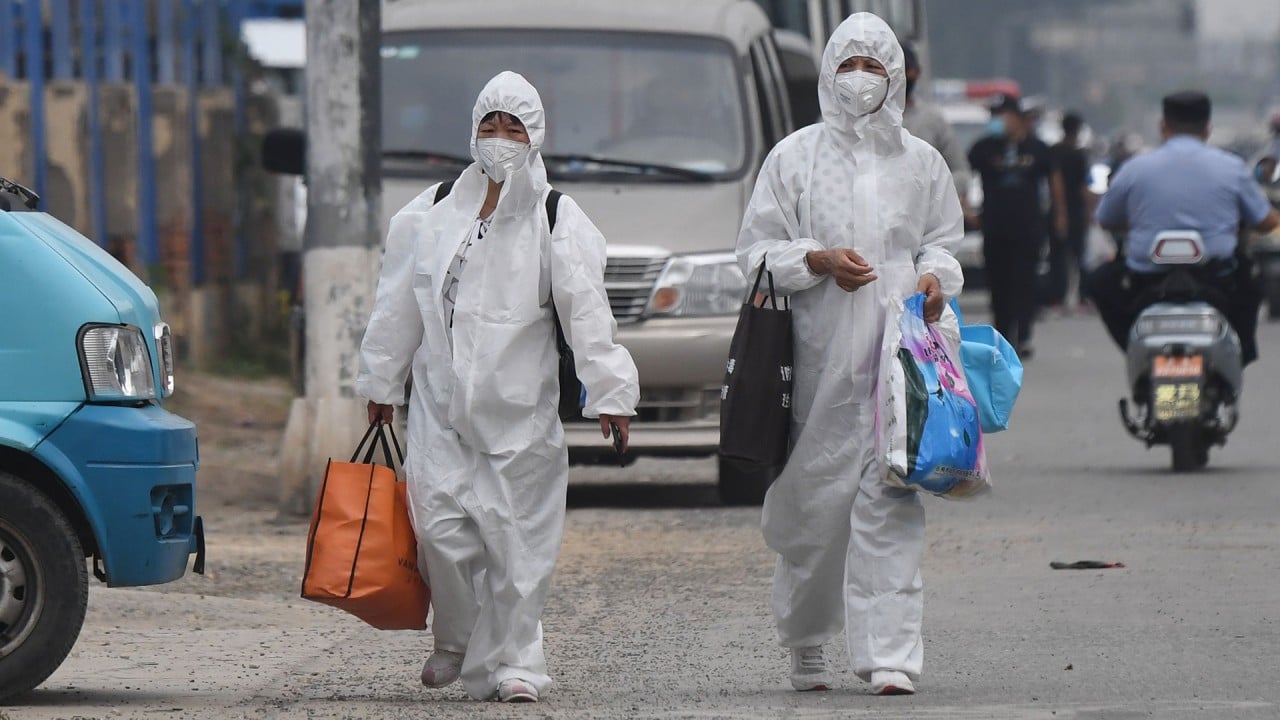
01:39
New coronavirus outbreak at Beijing food market fuels fears of second wave of cases in China

China on Thursday banned imported pork from a German company after its workers became infected by coronavirus, adding to uncertainty over fresh food shipments to the country amid a new outbreak in Beijing.
More than 650 out of 1000 staff at the meatpacking plant owned by Toennies tested positive for the virus, leading German authorities to close the facility, as well as schools and childcare centres in the western city of Guetersloh.
All products from the German slaughterhouse were banned from entering China as of June 17, the General Administration of Customs said on Thursday, adding German authorities had alerted China to the cluster of infections.
The outbreak is likely to add to concerns about the safety of imported proteins in China – a country of 1.4 billion people -and comes just days after Beijing halted shipments of European salmon amid fears it may be the source of a new coronavirus outbreak.

01:39
New coronavirus outbreak at Beijing food market fuels fears of second wave of cases in China
Though food experts say salmon is unlikely to carry the disease, shipments were frozen after the virus was discovered on chopping boards used for imported salmon at Beijing’s Xinfadi market, which has been linked to new infections in the capital.
The outbreak has resulted in a partial lockdown of the capital, though authorities are still investigating its origin.
China’s Ministry of Commerce said on Thursday it would step up communication and coordination with other countries to ensure the safety of imported foods.
“Increasing the import of food and agricultural products is an important part of China’s proactive import policy,” ministry spokesman Gao Feng said at a press conference when asked about the likelihood of further bans on frozen food imports.
“(But) imported food and agricultural products should comply with China’s relevant inspection and quarantine regulations.”

01:58
Salmon import ban and partial lockdown for Beijing after new Covid-19 cases in Chinese capital
Traders in China are already worried the appeal of foreign food among Chinese consumers may take a hit after European salmon imports were halted.
Salmon and other imported meat and seafood products have been removed from the shelves of major supermarkets across the country.
Authorities in China and Norway have said that Norwegian salmon was not the source of the coronavirus found on cutting boards at the Xinfadi market.
“We can clear away any uncertainty and the halt in salmon exports to China,” Norway’s Fisheries and Seafood Minister Odd Emil Ingebrigtsen told a video conference on Wednesday.
In the meantime, national and provincial authorities in China have increased testing of imported seafood and meat for traces of Covid-19.
The Chinese customs agency said on Thursday it had tested 32,174 samples from agricultural and manufacturing imports between June 11 and June 17 and all results were negative for the virus.
The samples included imported meat, aquatic products, vegetables, fruits, seafood, as well as transport and industrial devices used to maintain the shelf life of perishable goods.
Meat packing plants have become hotspots for Covid-19 across the world, with infections detected from the Americas to Europe and Australia.